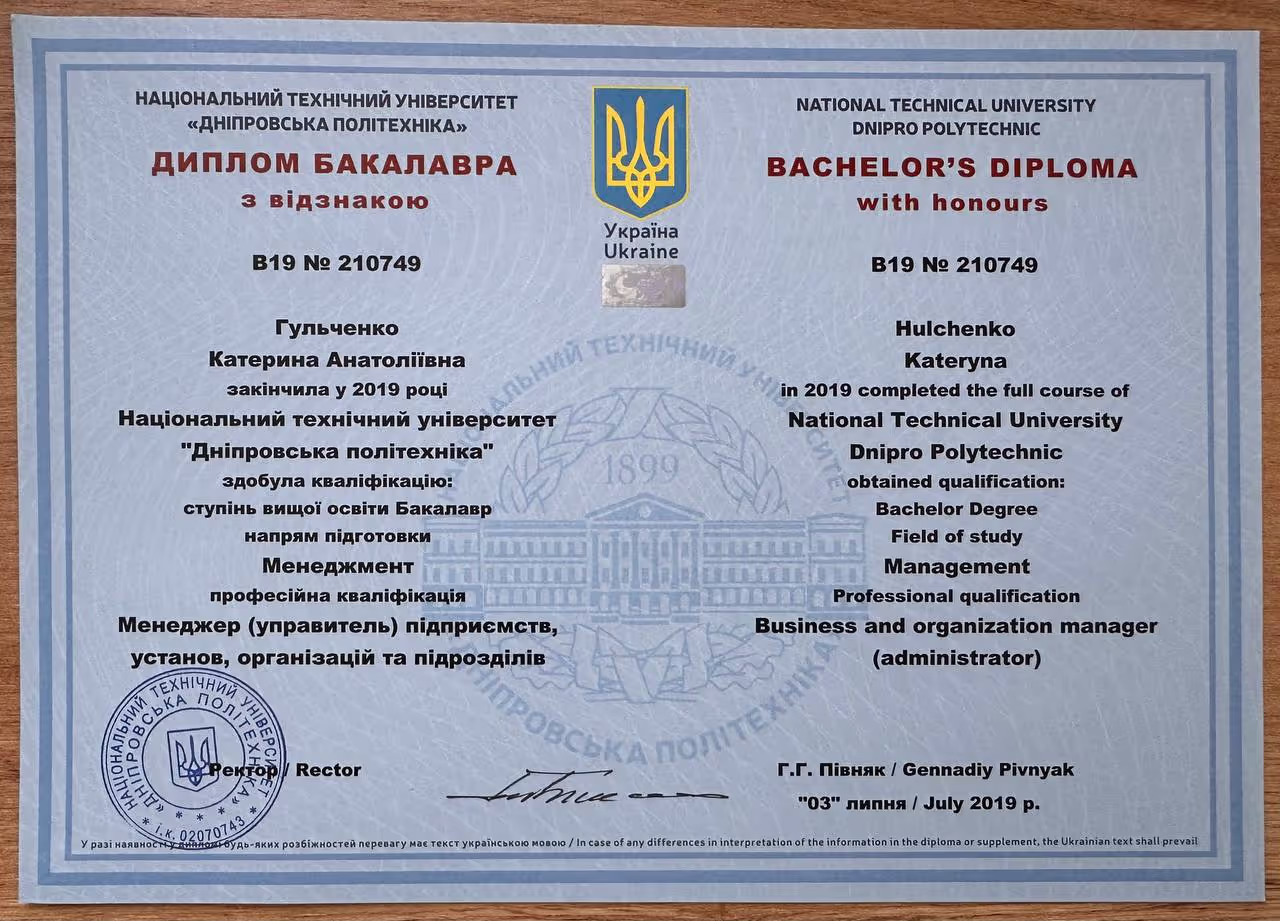Author's Posts
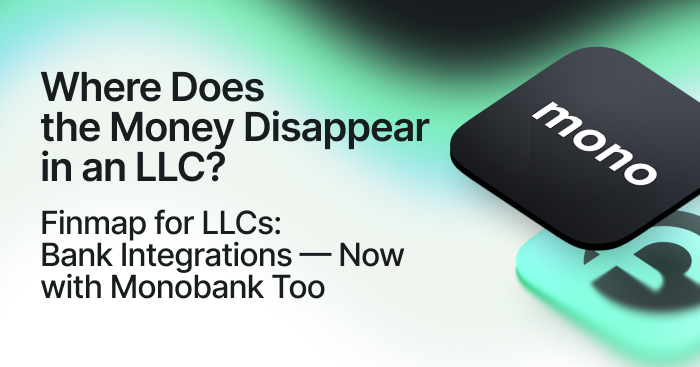
Bank Integrations for LLCs: A New Opportunity in Finmap With Monobank
Don't understand where the money from your LLC is going? The solution is Finmap with bank integrations, including Monobank. Control your finances without Excel.
“We were working at a profit. But our account balance is zero. Where did the money go?” This question stumps many LLC owners. Everything is working: the team, the product, sales — but at some point, there is simply not enough money. Not enough for salaries. Not enough for taxes. Not enough for purchases. A cash gap arises, and the business finds itself on the brink.
The pain is that you don't even see where exactly you are losing.
The accountant says the reports will be ready next month. The Excel spreadsheets haven't been updated in weeks. Money is scattered across accounts, contractors, employee cards — and it's difficult to piece it all together into a single picture.
Why Is This Critical for LLCs?
Businesses operating as LLCs are often complex structures: multiple accounts, departments, and directions.This is not “self-employment” — this is a system. And a system requires precision.
86% of LLC owners have these problems:
- No single system — they have to track cash, expenses, orders, and inventory in different places.Chaos in accounting — it’s impossible to consolidate all financial data in one place.
- It’s unclear which directions are profitable and which are dragging the business down.
- Excel can’t handle it anymore — routine tasks, exports, copy-pasting, mistakes.
- No clarity on whether the business is profitable or if dividends can be paid.
- Financial accounting is not automated.It’s hard to estimate the costs of opening a new location — everything is done “by feel.
- ”There’s no strong finance expert, or they are overloaded / not familiar with the business.
- A turnkey solution is needed — not just another finance course.
And instead of running the business, you turn into a financial analyst — or just close your eyes to the numbers.
How It Works in Practice
Financial accounting for LLCs is not about reports for the sake of reports, but about decisions that change business. Below are examples of companies that saw real figures and were able to make effective decisions thanks to Finmap.
Construction Company: “They Ate Themselves”
The company had six areas of focus: residential construction projects, commercial construction, and repair crews. Thanks to Finmap, they discovered that one area was eating into the profits of two others. Abandoning the unprofitable model resulted in a gain of 410,000 UAH over three months.
E-Commerce With Its Own Warehouse
The owner of a retail business that sells through Rozetka, Prom, and its own website has consolidated all expenses, orders, balances, and payments in one place. This saves over 40 hours per month, as previously all of this was managed in Google Sheets.
Education Business: Emigration School
The Finmap financial model revealed that lead acquisition costs exceed average revenue per customer. Sales department optimization resulted in a 22% increase in quarterly margins.
The statistics speak for themselves:
- 82% of LLC entrepreneurs in the small and medium business segment experience a lack of quality management accounting tools (according to a Finmap survey, 2024).
- Finance automation allows reducing time spent on routine tasks to 10 hours per month.
- Businesses that implement bank integrations with accounting systems increase financial transparency and make decisions twice as fast.
Finmap Integration With Monobank LLC — An Example of Automation Without Headaches
The new partnership between Finmap and Monobank for LLCs is a perfect example of effective business automation. This means that now all transactions appear in Finmap automatically. No exports. No errors. In real time.
The pain of manual data entry is in the past. Now LLC owners using Monobank can connect their accounts to Finmap, and the data will be updated automatically, without any extra actions on your part.
Previously, LLC owners with Monobank accounts couldn’t automatically pull statements into Finmap. Now, everything works simply and intuitively, just like it does with personal accounts.
How it works:
- In Finmap, click “Add integration”.
- Select Monobank LLC.
- If you are abroad, select Ukraine as the country, then Monobank LLC.
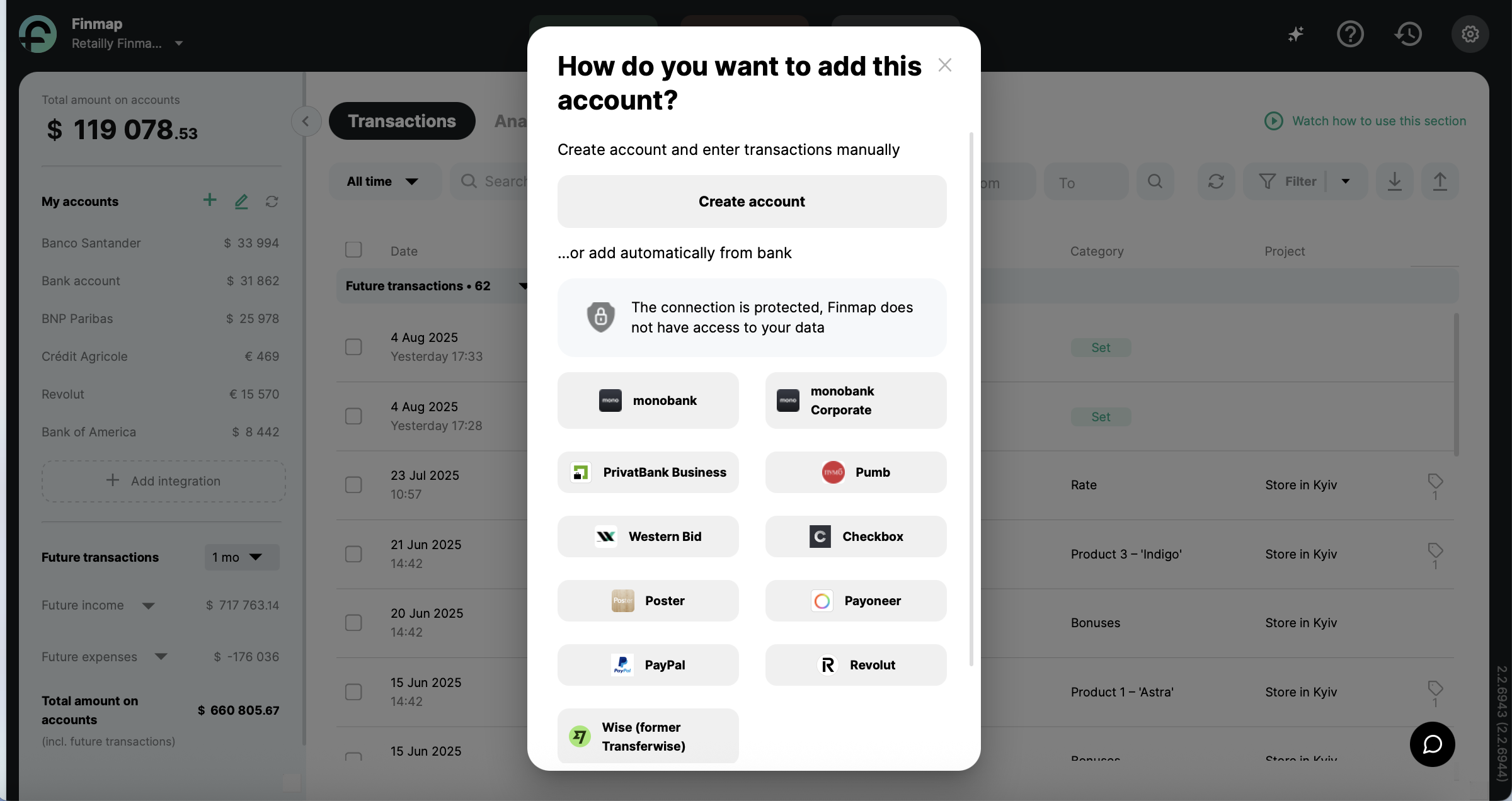
- Select an account, choose the period from which to pull data, and follow the instructions.
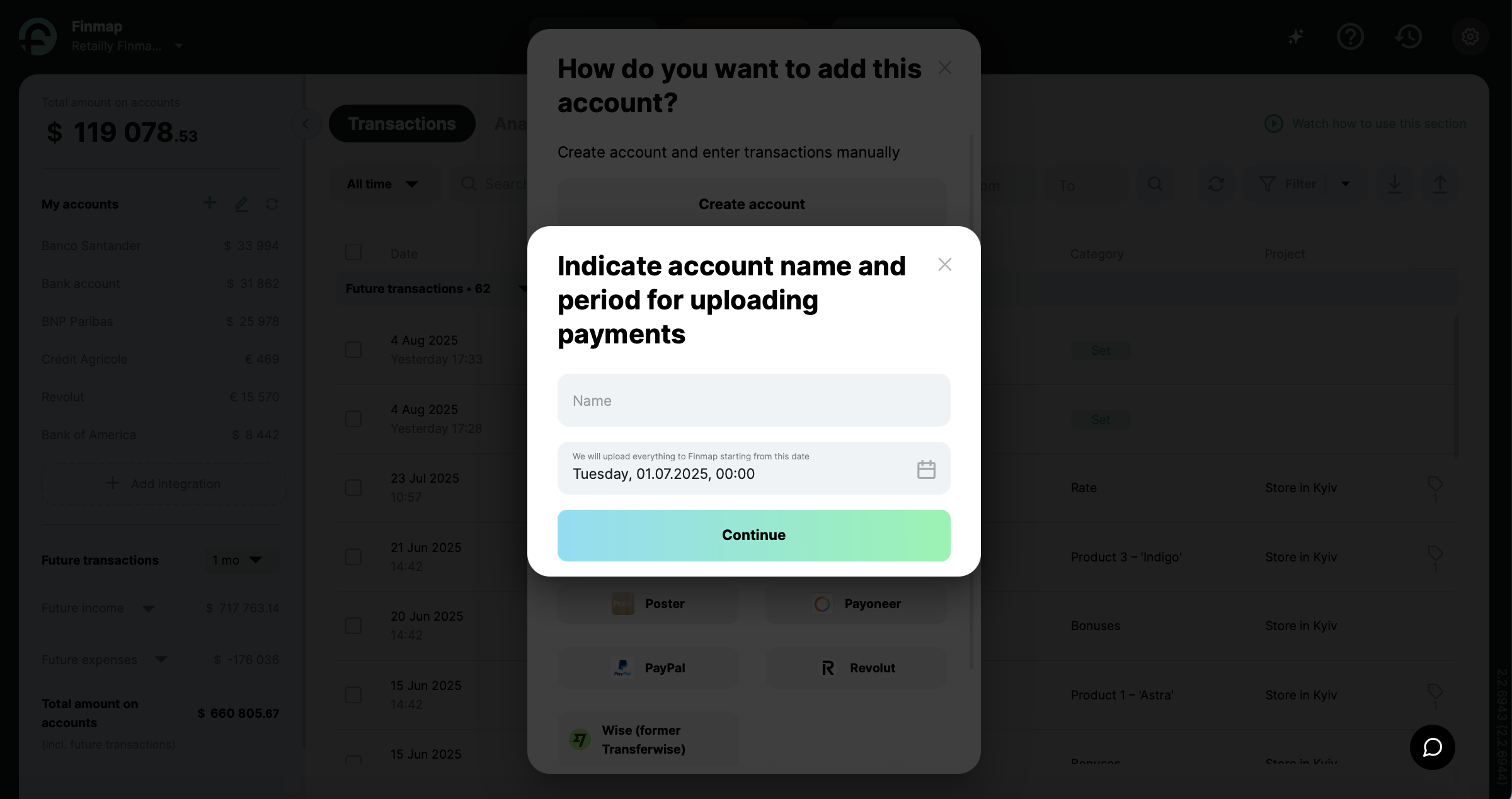
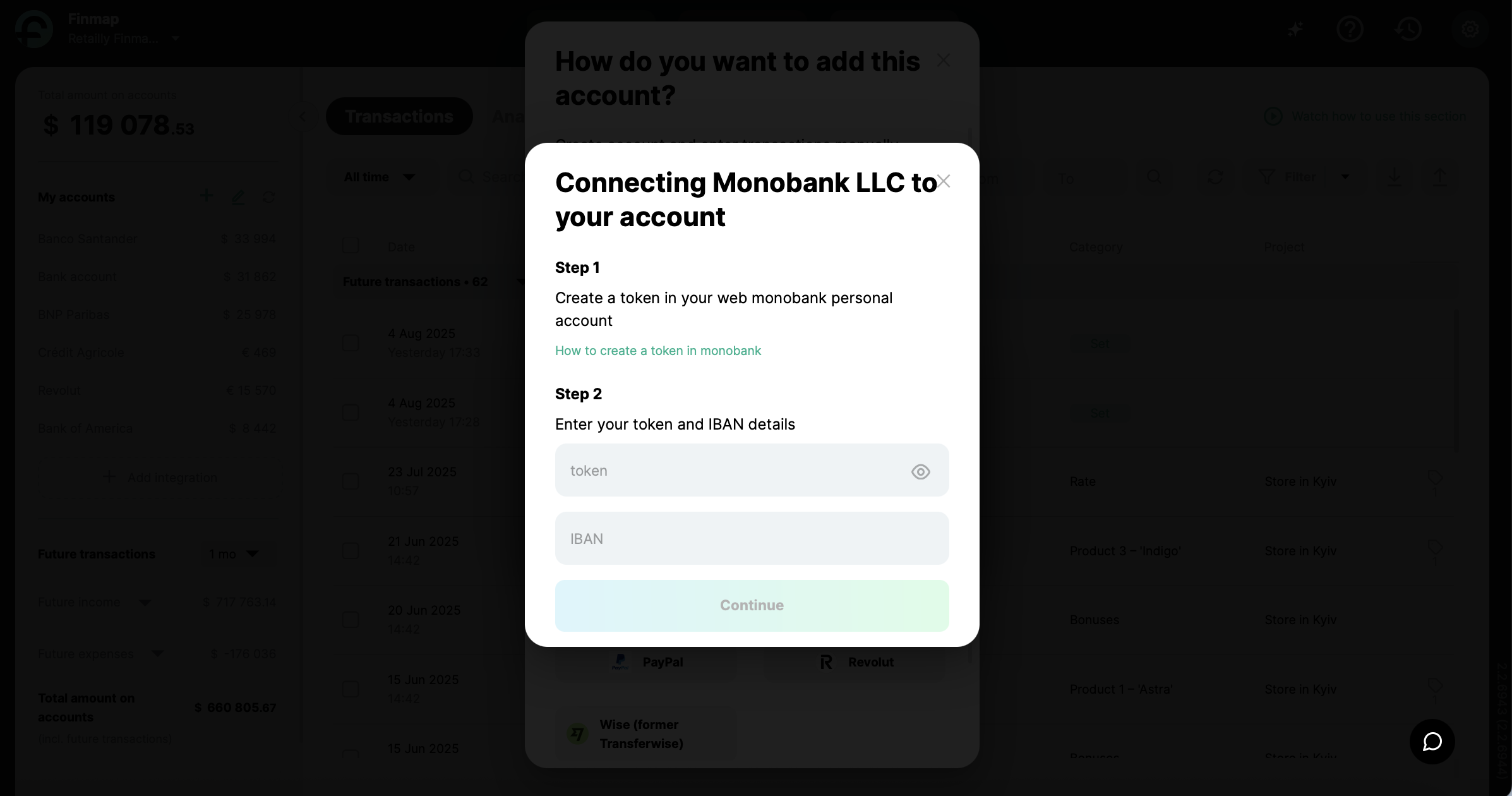
Bank integrations with Finmap solve a number of problems for LLC owners:
- Finmap collects all income, expenses, accounts, cash, debts, and investments in one system. The data is updated automatically. Excel is in the past.
- When you have a project-based business, you need to see what is profitable and what is dragging you down. In Finmap, you can break down accounting by legal entities, departments, or directions.
- Previously, LLC owners using Monobank had to export statements manually. Now — they don’t. Data is pulled automatically, just like for sole proprietors. No errors. No extra steps.
- The financial manager has access to all the necessary data for their work, the department head sees only the information related to their unit, and the partner sees only the data related to their share. Full control over access rights.
- You don’t need a CFO or to understand budgeting. Finmap provides outsourced CFO services who will set up accounting tailored to your business.
Who is this solution for:
- For owners of small and medium-sized businesses who manage LLC accounts in Monobank.
- For those who want to see up-to-date financial data without extra effort.
- For entrepreneurs who need to react quickly to changes in cash flow.
What else does a business get with Finmap:
- Over 2,800 bank integrations worldwide
- Support for 114 currencies and 138 cryptocurrencies
- Bank-level security — 256-bit encryption, data stored on European servers
- Automatic analysis of cash flow, P&L, balance sheet, receivables and payables
Now for the Main Point: Why Integration With Monobank LLC Is a Must-Have
- Statement automation — no CSVs or copy-pasting
- Time savings — on average up to 10 hours per month
- Real-time data — you see problems before they become critical
- Less human factor — fewer mistakes
Time to face the truth:
Do your projects generate profit — or just look good in presentations?Do you know how much it costs to open a new location — or is it “we’ll see” again?
How much more time will you spend on manual routine?
Ready to see what financial order looks like?
Finmap integrates with Monobank not only for LLCs but also for sole proprietors, and it supports many other bank integrations — choose comfort and automation for your business. Try the Monobank integration now!
.jpg)
Financial Control as a Path to Growth: The KLEI x Finmap Case
KLEI is a sticker brand that grew from chaos to scale thanks to structured financial management. Learn how Finmap helped them get organized, avoid cash gaps, and prepare for investment.
A creative product, loyal customers, and a dedicated team — that’s enough for inspiration. But not for scaling.
Without structured financial management, it’s impossible to make informed decisions: where to invest, what to grow, and what to cut.
KLEI printed stickers for well-known clients, sold abroad, received customer praise, and managed everything — except one thing: understanding where they were actually making money and where they were losing it.
As the bank account neared zero while orders kept growing, one question emerged:
Are we actually making money — or just keeping busy?
KLEI: Built on Meaning, Geared for Growth
KLEI is a Ukrainian brand of durable stickers founded in 2017. Instead of mass production, they focused on quality and product value. The company began with a compact team of 10, operating like a family business.

Thanks to founder Mykyta Anikanov’s creative yet pragmatic approach, the business quickly gained momentum, soon landing clients like Reface, Wix, Banda Agency, Wikimedia, and others.
When Finances Become a Bottleneck
On the surface, everything looked great: stable orders, international clients, high quality. Customers in Canada placed orders and were willing to wait weeks for delivery — all without additional marketing.
But in 2021, growth seemed to hit an invisible ceiling. Mykyta realized the core issue was finances. There was no understanding of how much the business was actually earning. Some months showed profit, others ended in the red — and it was hard to explain why.
The causes:
- Cash gaps caused by mixed payment methods
- Unclear cost structure due to order variety
- No single system to show where the business was losing money
At the time, KLEI handled widely varying orders — from 1 to 10,000 stickers, contour-cut, bundled, or corporate.
But they lacked analytics to show which orders were profitable and which were dragging them down. To get clarity and build a foundation, Mykyta decided to implement Finmap.
I want to build a company that’s reliable and doesn’t collapse at the first crisis. That takes time. And finances have always been my weak point — it was really difficult for me. - Mykyta Anikanov, founder of KLEI

From Spreadsheets to a System: What Changed with Finmap
In summer 2021, Mykyta explored Finmap. By autumn, as the business season kicked off, the company fully implemented the system: centralized financial management and shut down Excel spreadsheets.
Key tools and decisions that immediately made an impact:
- Consolidating all data in one system
Before Finmap, financial management was fragmented: separate accounts, spreadsheets, and mental notes. This created constant stress — will everything add up? Do we have enough cash? Did we miss anything?
Before, I’d be calm for two days and then stressed for two weeks. Now it’s the opposite — I’m always calm.
- Mykyta Anikanov, founder of KLEI
- Managing accounts receivable
KLEI often worked without prepayment to speed up the process and secure orders. Late payments seemed rare, but in reality, they caused serious cash gaps.

Money was supposed to hit the account, but delays broke the operational rhythm. Thanks to the Payables report and Payment Calendar, the company identified this weakness and made a clear decision.
After implementing financial management, I saw in Finmap that we really had receivables. So we just said: okay, from now on — prepayment only.
-Mykyta Anikanov, founder of KLEI
- Full control over balances and Cash Flow
Finmap allowed KLEI to see their financial state in real time: how much cash is in the account, which payments are pending, what’s coming tomorrow. This eliminated the constant background anxiety of “feeling” finances — now there are numbers, graphs, and dates.
I open Finmap, see the balance, upcoming expenses, still in the black — and move on. Before, I had to check three bank accounts, spreadsheets, notes — and still be unsure. - Mykyta Anikanov, founder of KLEI
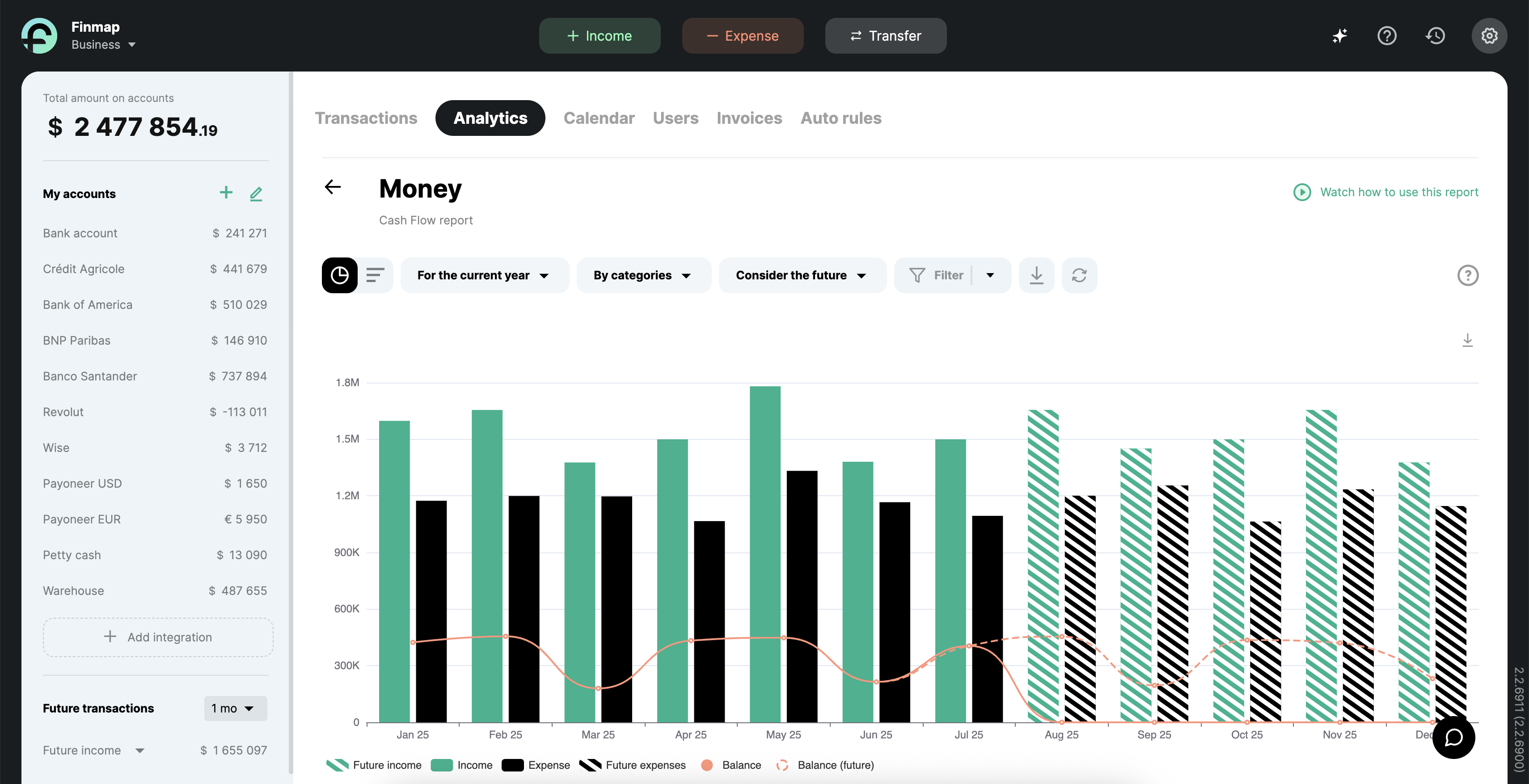
- Categorizing orders
To dive deeper, KLEI created a category structure in Finmap: separate categories for individual stickers and sticker packs. This revealed profitability by product type — not just at the business level, but by direction. They saw what to scale and what to rethink.
Before, we just looked at the total: money came in — so we were fine. But once we started dividing by order types, we saw that not everything was equally profitable.
- Mykyta Anikanov, founder of KLEI
Developing Financial Literacy
Finances were Mykyta’s weak spot — the topic always made him anxious. Alongside Finmap, he completed the “Business Money” course. This allowed him to both delegate operations and personally understand how business finances work.
I used to constantly wonder — will everything add up, will there be enough? Now I understand where those questions come from — and how to answer them.
- Mykyta Anikanov, founder of KLEI
Combining automation with personal involvement gave Mykyta what he needed most — confidence. He no longer relies on intuition. He makes decisions based on reports and real data.
This shifted not just the finances, but the entire business management approach.
A Financial System as a Prerequisite for Scaling
After configuring Finmap and delegating operations, the system became a steady anchor for the team. All key financial data was in one place, clearly structured by category, and accessible anytime.
This freed up time for what truly matters to a founder: growth, strategy, expansion.
So in 2025, KLEI reached a new level of scaling:
- Raised investment.
- Started building their own production facility.
- Opened new accounts.
- Launched a new financial structure aligned with their growth.
This growth would’ve been impossible without a working financial system already in place — they didn’t have to build from scratch.
When You Know the Numbers — You Know Where You’re Going
Next up: completing their production facility, stabilizing processes, and preparing to enter new markets. Finmap remains central — providing structure, control, and a foundation for every next move.
In the end, Mykyta offers a simple but practical takeaway:
Spend time on finances weekly. Even 30 minutes analyzing the numbers gives you more than guesses or gut feeling. A founder should know what every number means — and make decisions based on facts.
What You Can Learn from KLEI’s Story
Your business might resemble KLEI’s: a solid product, loyal customers — but inside, no clear view of expenses, constant cash gaps, and a lingering sense that something’s off.
KLEI stopped in time, looked into their finances — and saw the real picture. That gave them the confidence to scale, raise investment, and grow with clarity.
If you're reading this, you're probably on the path to financial clarity.
Here are a few lessons KLEI learned — so you don’t have to go through it blindly:
- No system = no control.
- Profit “by feel” = risk of a cash gap.
- Order in finances = not about Excel, but about automation, consistency, and the right tool.
Do what KLEI did: don’t wait for a crisis to get organized.
Try Finmap and see how business changes when financial clarity arrives.
Frequently Asked Questions
1. Why did a company with stable orders still face financial trouble?
Because orders ≠ profit. KLEI lacked a system to show what actually brings in money and what just adds turnover. This led to cash gaps and unclear costs.
2. What action creates immediate impact, regardless of industry?
Centralizing all accounts, income, and expenses in one system — and reviewing them daily in one window. This reduces chaos, brings clarity, and removes the risk of forgetting something.
For KLEI, that was the point where real control began. It works for any business, any niche.
3. Is Finmap suitable for small or creative businesses?
Yes. KLEI is a small business with a creative product. Such companies often operate on intuition. Finmap lets you stay creative — while seeing the real money.
4. What if I don’t understand finances?
Mykyta from KLEI wasn’t a finance expert either — and he says so. He delegated the bookkeeping, took a basic course, and learned to read reports. Finmap is made for founders who want clarity without getting lost in routine.
5. What results did KLEI achieve after organizing their finances?
They raised investment, launched their own production facility, built a new financial structure, and upgraded operations — all based on data, not assumptions.

Finmap AI Copilot: Your Financial Assistant for Automated Management and Analysis
Discover how Finmap AI Copilot helps entrepreneurs automate cash flow tracking, analyze reports, and make confident financial decisions—effortlessly.
Business is driven not only by numbers, but by the right decisions.
Getting a financial report is not the finish line.
The real challenge starts when you need to understand what those numbers actually mean for your business.
Cash flow increased this month? Is that really a good sign — or just an illusion of profitability hiding unpaid obligations or one-time income?
Keeping Up with Change — or Losing Everything: How AI is Transforming Financial Management
Today, technology doesn’t just store and structure your financial data — it helps you use it wisely.
Artificial intelligence can do in minutes what used to take hours of analysis and brainstorming: detect anomalies, uncover the true reasons behind financial shifts, and identify weak spots.
Imagine getting instant answers instead of spending hours crunching numbers:
- Why is profit down this month despite higher sales?
- Which client brings in the most money (and are they truly profitable)?
- Which department is draining the budget without delivering results?
- Will the company have enough cash for the next 3 months without additional funding?
This isn’t fiction — these are real scenarios Finmap AI Copilot handles daily.
If you’re tired of staring at numbers and still not getting answers — now’s the time to bring AI into your business.
Finmap AI Copilot: A New Era of Financial Management in Finmap
A new tool from Finmap, powered by OpenAI API. It’s a smart financial assistant that analyzes your reports, highlights key insights, and recommends solutions.
Designed for small and medium-sized businesses to:
- Quickly interpret financial metrics;
- See a clear picture of cash flow;
- Make decisions based on facts, not guesses.
Unlike basic chatbots, Finmap AI Copilot is a fully autonomous analyst that processes reports independently and delivers not just general advice—but specific, personalized analysis.
.avif)
Security First: How We Protect Your Data
Finmap AI Copilot was built with strict data protection in mind. We use the OpenAI API in a way that ensures your financial data stays private. What does that mean?
- Your data is not used to train AI models. We don’t give OpenAI permission to store or analyze your reports beyond the current task.
- Every request is handled individually. Once the answer is delivered, the data is deleted—no memory is retained between sessions.
- Your data is never shared with others or added to a “common database.”
In short: each time Finmap AI Copilot analyzes your report, it’s only for you, only now, and leaves no trace afterward.
Finmap AI Copilot — The Algorithm That Knows Your Finances Better Than You Do
Currently, Finmap AI Copilot structures its report in four main sections:
- General financial health overview: assessing the business’s condition and highlighting risks;
- Revenue and expense analysis: what drives profit and what drains resources;
- Benchmarking: showing how you stack up against market averages;
- Conclusions and recommendations: helping you move from analysis to action.
Based on your actual data, Finmap AI Copilot:
- Breaks down your cash flow: explains balance changes and what influenced transactions;
- Tracks profitability trends by month, category, and client;
- Identifies inefficient spending: recurring payments that don’t pay off;
- Highlights which products or services generate the most income—and which need reevaluation;
- Assesses risks and issues warnings;
- Advises on product mix and structure;
- Performs advanced P&L analysis automatically;
- Suggests concrete actions: what to cut, where to optimize, how to balance cash;
- Generates a top 10 actions list to improve financial performance.
Can Your Business Keep Up with the Competition? Find Out in Just 2 Clicks
Finmap AI Copilot doesn’t just analyze your data — it benchmarks it against the market average. This gives you the context to:
- Know whether you’re on the right track;
- See where and why you lag behind competitors;
- Understand whether market trends are affecting everyone—or just you.
For a small or medium business owner, it’s like having your own financial analytics team — but without the extra costs.
The Value of Finmap AI Copilot for Your Business
A structured solution that helps business owners react quickly, make informed decisions, and focus on strategy. Here's what you actually get:
Finance Automation in Action
Saves time and effort by auto-generating reports, highlighting what matters, and explaining the essence.
Works as a 24/7 Financial Assistant
Always available — no days off, no emotions, no human error. Ask a question, get an answer.
Brings Confidence to Decisions
Instead of guessing “Am I doing the right thing?”, you get facts, analysis, and actionable insights — right now.
Keeps You Focused on What Matters
Instead of drowning in reports, Finmap AI Copilot highlights critical issues so you can focus on solutions.
Breaks the Illusion of Profitability
Things may look good — but that might be deceiving. Finmap AI Copilot reveals the true picture.
Brings Order to Small Business Finances
Helps structure data, connect spending and income patterns across time — and build stability, not just survival.
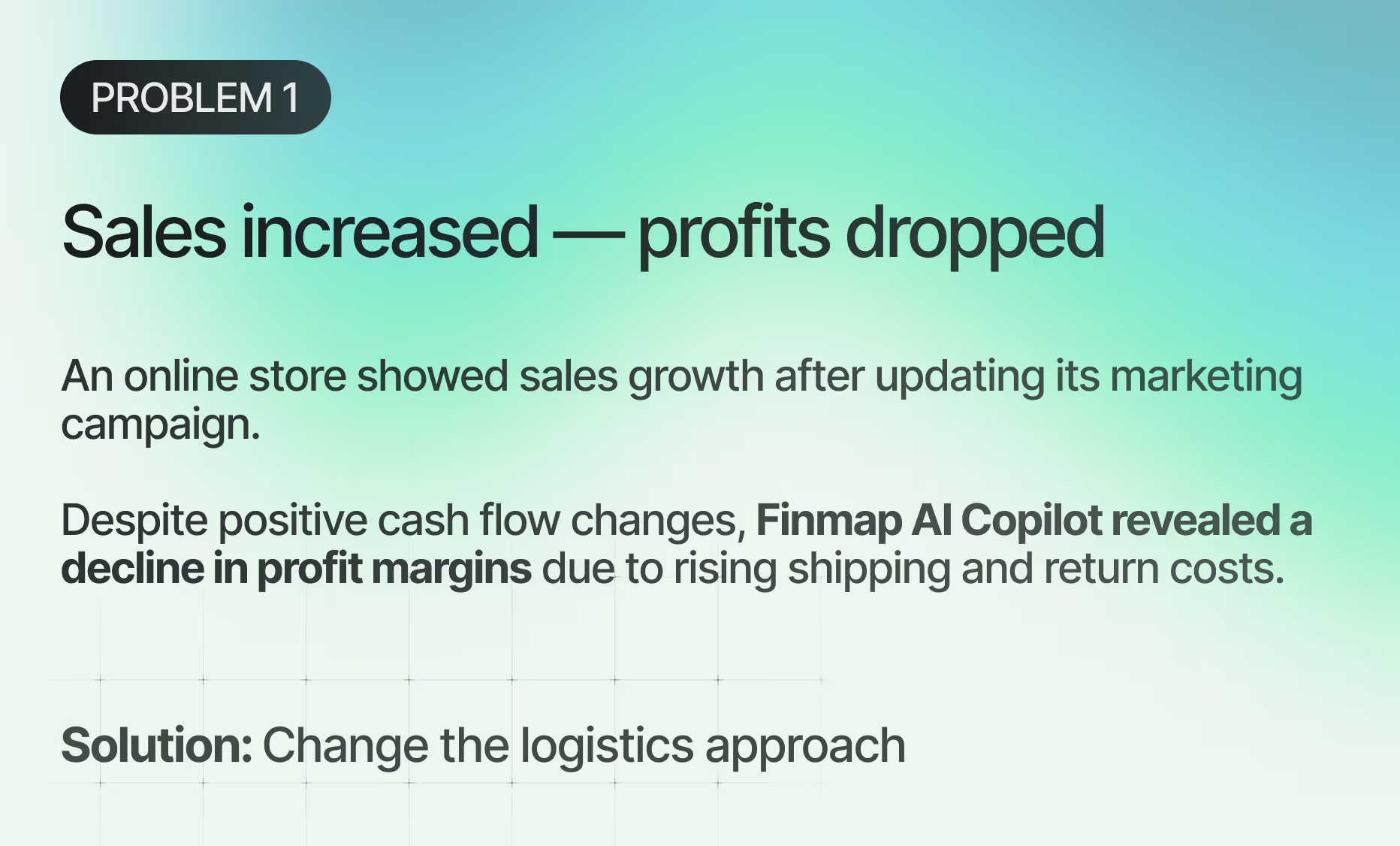
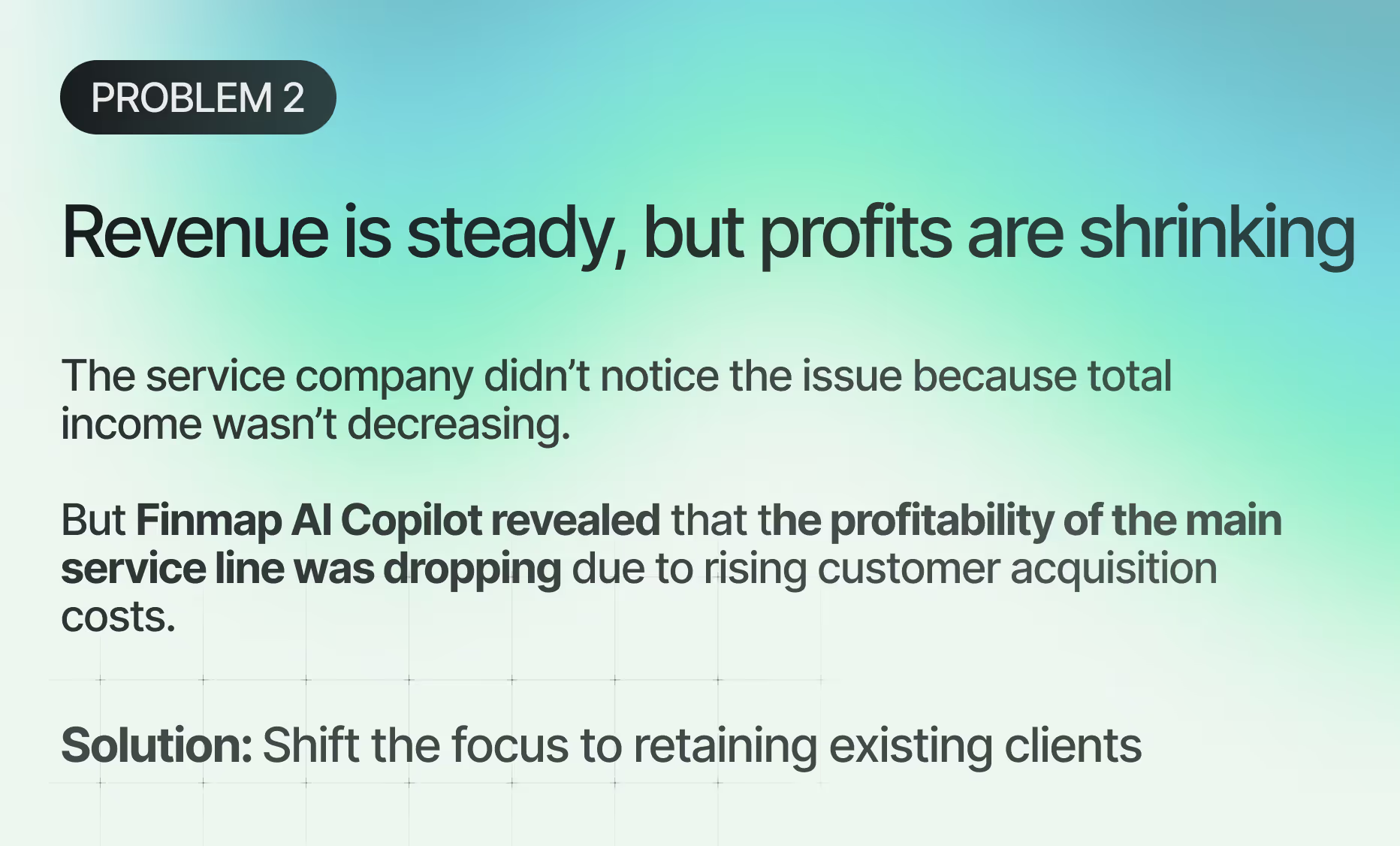
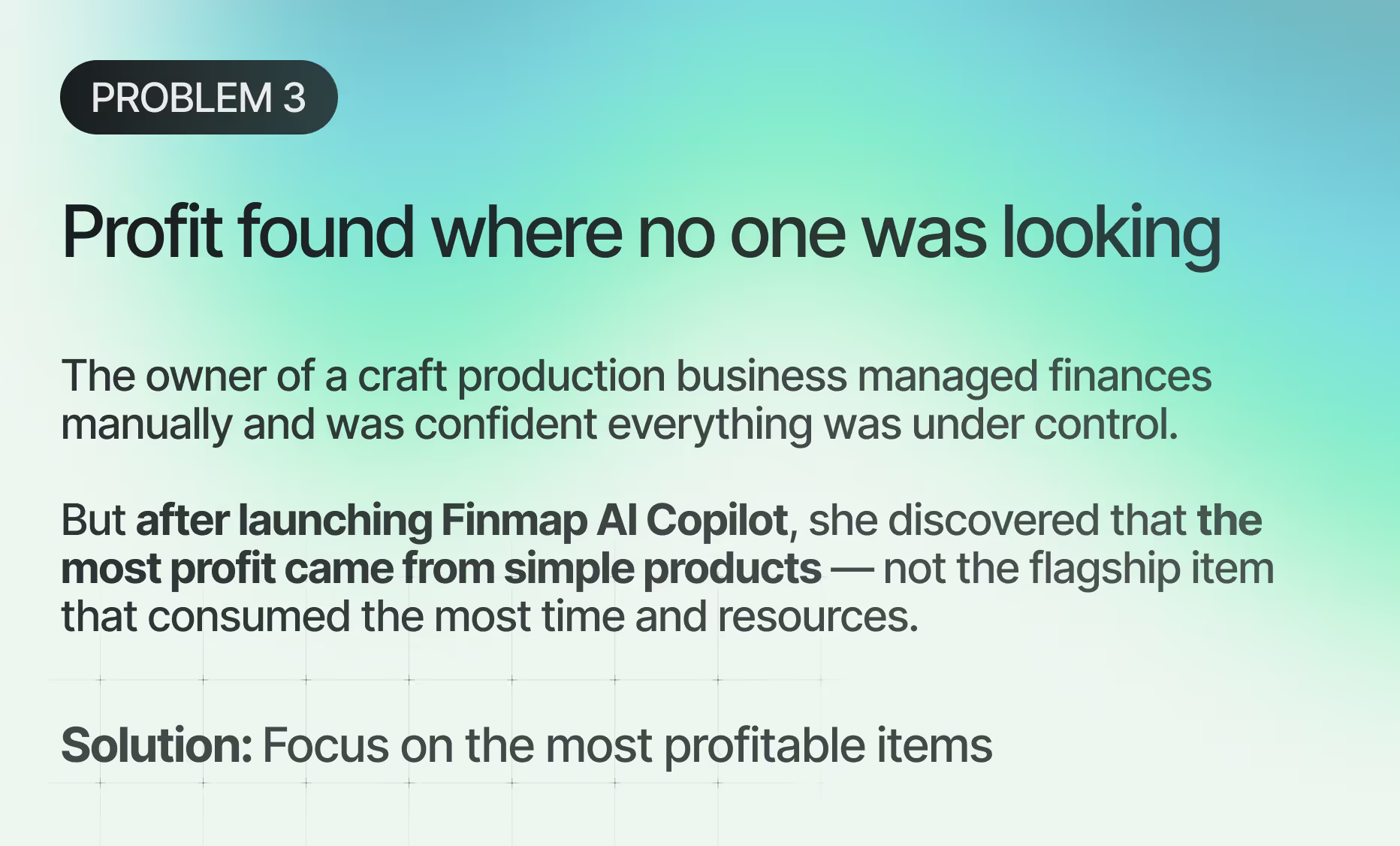
New Features Just Around the Corner
Finmap AI Copilot is already up and running — and constantly evolving. In fact, while you're reading this, new features may already be live, such as the ability to ask questions via text or voice, for example:
- Why did profit drop in July?
- Which expenses increased in Q2?
- Will I have enough cash for payroll through the end of the month?
It’s not just convenient — it’s the next level of financial management for small businesses. And savvy entrepreneurs are already using it.
Time to Act
Finmap AI Copilot isn’t just a feature — it’s a strategic advantage.
Where analytics and cash flow tracking once took time, energy, and experience, now all you need is your financial data — Finmap AI Copilot does the rest.
Already using Finmap? Test Finmap AI Copilot today.
New user? Sign up, add at least one quarter of data — and see it in action.
Business won’t wait. Start now!

Workflow Automation: Key Integrations to Enhance Finmap's Efficiency
Automation saves time, reduces errors, and improves workflows by integrating different platforms
Automation of business processes is critical for the competitiveness of companies today. Implementing optimisation systems can significantly reduce the time spent on data processing, reduce the likelihood of human errors, and enable employees to focus on strategic tasks.
As the importance of this topic is constantly growing, we suggest you consider the main benefits of automation. In this article, we'll explain how platform integration ensures full automation of data transfer and share real-life examples of its use.
Benefits of Implementing Automation
Implementing automation in business processes has a number of important advantages. They have a direct impact on the efficiency, productivity, and development of an enterprise, regardless of its field of activity.
The most tangible benefits:
- Saving time and resources. Automation reduces the amount of manual work, freeing up time for priority tasks. By delegating routine to software algorithms, employees can focus on strategic tasks.
- Reduced errors. Manual data entry is always accompanied by the risk of errors. Automation reduces it, ensuring the accuracy and reliability of tasks.
- Increased efficiency. Automation of processes helps to respond more quickly to changes and customer requests and complete tasks faster. All this increases business productivity.
- Optimisation of workflows. Integration of different systems and platforms allows you to create more coherent workflows and effective interaction between departments and teams.
- Improved customer service. Automated processes make it possible to process customer requests quickly and efficiently. This increases customer satisfaction and loyalty to your business.
- Scalability. By implementing automation, you can easily scale your business processes without investing heavily in additional resources or staff. This is especially important for fast-growing companies.
Use of Online Connectors
Today, many different services are used to effectively automate business processes. Online connectors are one of the most advanced solutions.
These tools are used to integrate different platforms in order to maximise the transfer of work processes to the ‘automatic’ mode. They provide a simple and efficient connection between services and constant data exchange 24/7.

Let us consider how an online connector works using the example of ApiX-Drive. First, the user defines the data source, which can be any online service: CRM system, email, advertising account, etc.
After that, they select the receiver where the data will be transferred (for example, to a database, marketing platform, or other online tool). The ability to customise each integration in detail to meet the specific needs of the user makes ApiX-Drive stand out from other services. The final step is to specify the data update interval.
Advantages of ApiX-Drive:
- Ease of use: no programming skills required; quick setup of integrations thanks to an intuitive interface.
- Versatility: a large catalogue of systems and services that allows you to find solutions for automating a wide range of work processes.
- Automation: the elimination of manual data entry and errors that occur due to inattention or haste.
- Customisation: the ability to use filters, IF/Else logic, the AI TOOLS module, and other functions to customise the integration for specific tasks.
- Support and scalability: ongoing technical support and flexibility to scale workflow automation to meet new needs.
Integration of Finmap and KeyCRM

Integration of the KeyCRM platform with the Finmap helps automate business processes, improve cash management, and control over financial performance. Here are a few examples of use cases for this integration:
- Automation of financial reports. Every time a new order is added to KeyCRM or an existing order is updated, information about it is automatically transferred to Finmap. Thus, all orders are automatically reflected in financial reports. This simplifies the reporting process and allows you to get accurate revenue information faster.
- Control over expenses and income. Whenever KeyCRM receives new payments from customers or data on project costs, this information is automatically transferred to Finmap, where records of income and expenses are created. This ensures operational monitoring of financial flows, which helps to better control costs, compare them with expected revenues, and avoid financial problems.
- Analysis of the effectiveness of campaigns. Data on the revenue generated by each marketing campaign is automatically transferred from KeyCRM to Finmap. This allows you to analyse which campaigns are the most effective in terms of financial performance. This integration allows you to quickly assess the profitability of each campaign and optimise your marketing budget based on real financial data.
Integration of Finmap and Google Sheets

The integration of Google Sheets and Finmap is useful for businesses that need to automate financial data and reporting. Google Sheets in such a tandem can serve as a flexible tool for collecting and storing data, and Finmap as a specialised tool for financial management.
Here are some real-life case studies where this integration will bring significant benefits:
- Automatic tracking of receipts from clients. Example: A freelancer or small business uses Google Sheets to keep a list of clients and their income, and Finmap to manage their cash flow. Every time an entrepreneur receives a payment from a client, they enter the information into Google Sheets. Thanks to the integration, this information is automatically transferred to Finmap, where it is recorded as a receipt.
- Recording transfers and expenses for marketing campaigns. Example: a marketing agency uses Google Sheets to keep track of advertising and marketing campaign expenses, and Finmap to process this financial data. It enters all the data on expenses (amount, date, supplier) in Google Sheets. The integration automatically transfers them to Finmap, where they are recorded as expenses.
- Budget monitoring. Example: a family budget or the budget of a small organisation is kept in Google Sheets, and financial transactions are processed in Finmap. Data on monthly expenses, receipts, and transfers are entered into Google Sheets for storage purposes. The integration automatically exports this data to Finmap for further accounting and detailed analysis.
The results
Workflow automation is one of the most effective ways to optimise the modern business environment. It helps companies increase productivity, reduce costs, and scale their operations.
The introduction of online connectors such as ApiX-Drive greatly facilitates the integration of applications used in work and, consequently, process automation. This allows businesses to respond to changes faster and improve the quality and efficiency of their operations.
The positive effect is observed in both internal (interaction between employees) and external (interaction with customers) processes. As a result, businesses can quickly adapt to changing market conditions and strengthen their competitiveness.
And if you are interested in learning how to organise your business finances and see all the money and profit in clear graphs on one screen, Finmap specialists will be happy to help you.
.avif)
How a Publishing Agency Eliminated Cash Gaps and Boosted Profits by 10%
Do you ever feel like your business is stuck in a cycle of constant financial difficulties? We know how difficult it can be to run a business in an uncertain environment. Especially when cash gaps and recurring losses hinder growth.
However, there is a way to change the situation for the better. Find out how a publishing house and educational projects managed not only to overcome financial difficulties but also to achieve a 10% monthly profit growth.
Losses and uncertainty: what to do?
Our client, a well-known publishing house with educational projects, faced the following problems:
- Cash gaps
- Constant losses
- Inefficient reinvestment
- Ineffective investments in new projects
- It was difficult to determine which products were profitable and which were unprofitable.
These risks posed the threat of bankruptcy, poor management decisions, and investing resources in unprofitable products.
How Finmap's financiers changed the situation
We started with a detailed analysis of profitability to determine which areas of activity were profitable and which were unprofitable. Then we implemented a systematic control of financial indicators with Finmap, which allowed us to track the financial position in real time.
Impressive results of cooperation
Thanks to the cooperation, the client achieved the following results:
- Complete absence of cash gaps
- Effective financial management
- Financial modelling of new projects
- Competent management of investments and reinvestment of profits
- Profit growth by 10% per month from the second month of cooperation
New financial structure and investment policy
We helped to create a clear financial structure for the business, reduce staff costs and increase efficiency. An effective investment management policy was also implemented, which significantly increased the profitability of the projects.
What kind of entrepreneur do you want to be?
Are you ready to get rid of financial difficulties and reach a new level of business development? At Finmap, we are committed to helping you achieve this. Our team of financial experts is ready to provide the support you need to optimise your business:
- Analysing the profitability and profitability of projects
- Implementation of a financial performance control system
- Effective financial and investment management
- Development of an individual financial strategy
Take the first step towards the stability and growth of your business. Let's get your financial affairs in order together!

